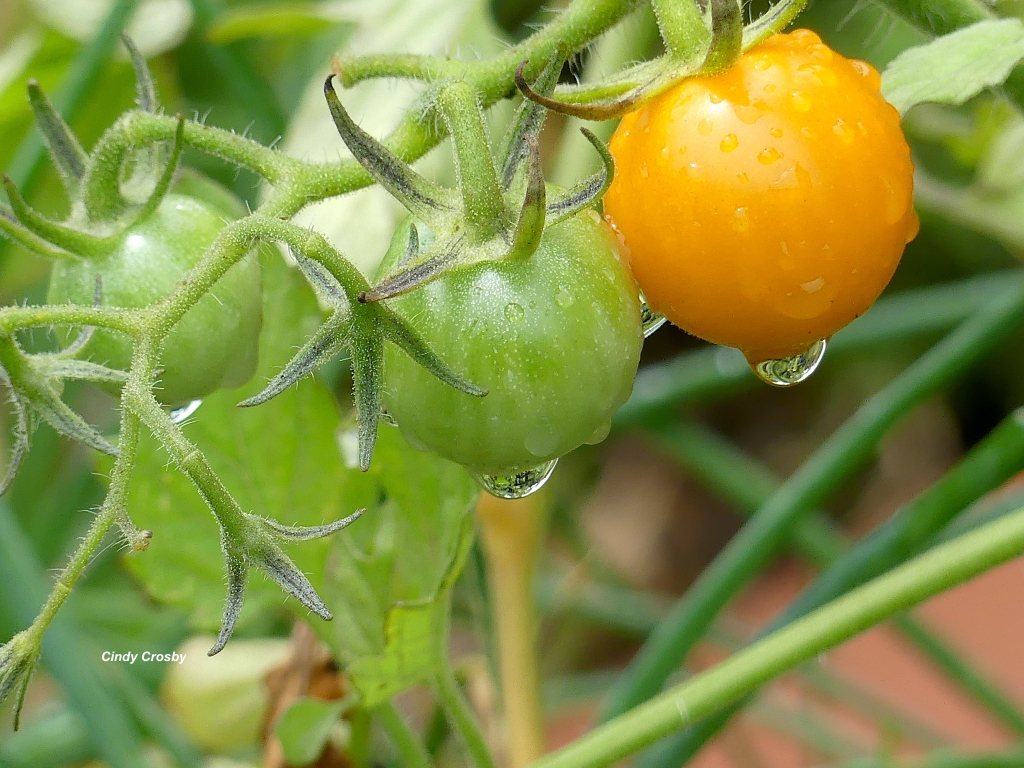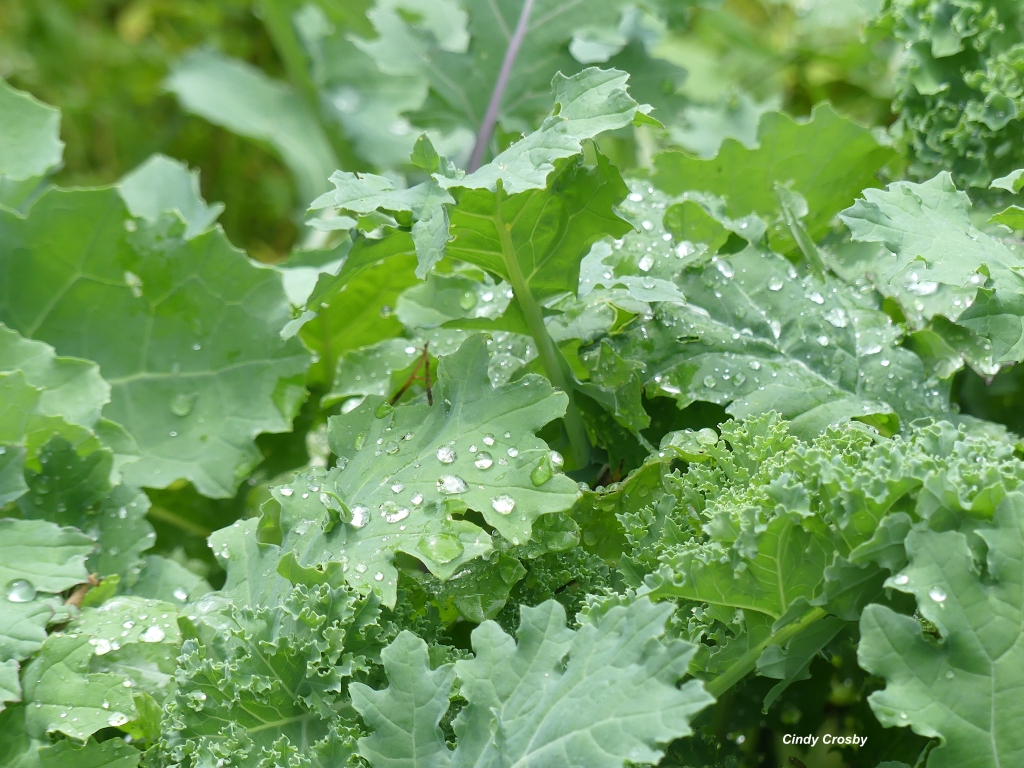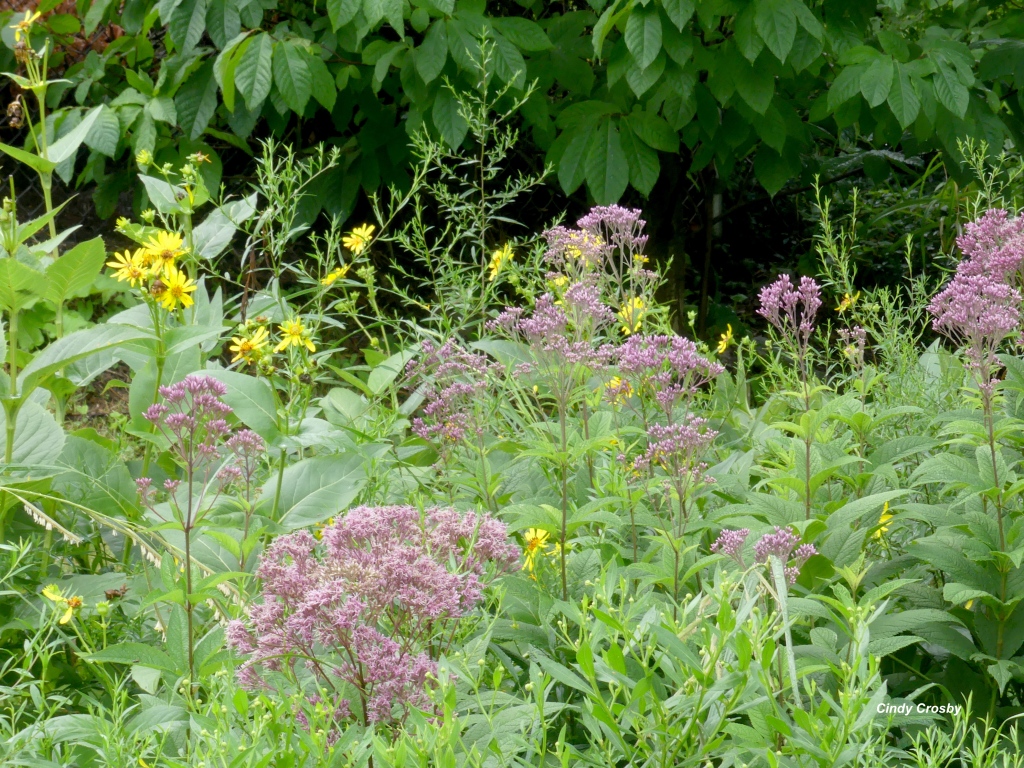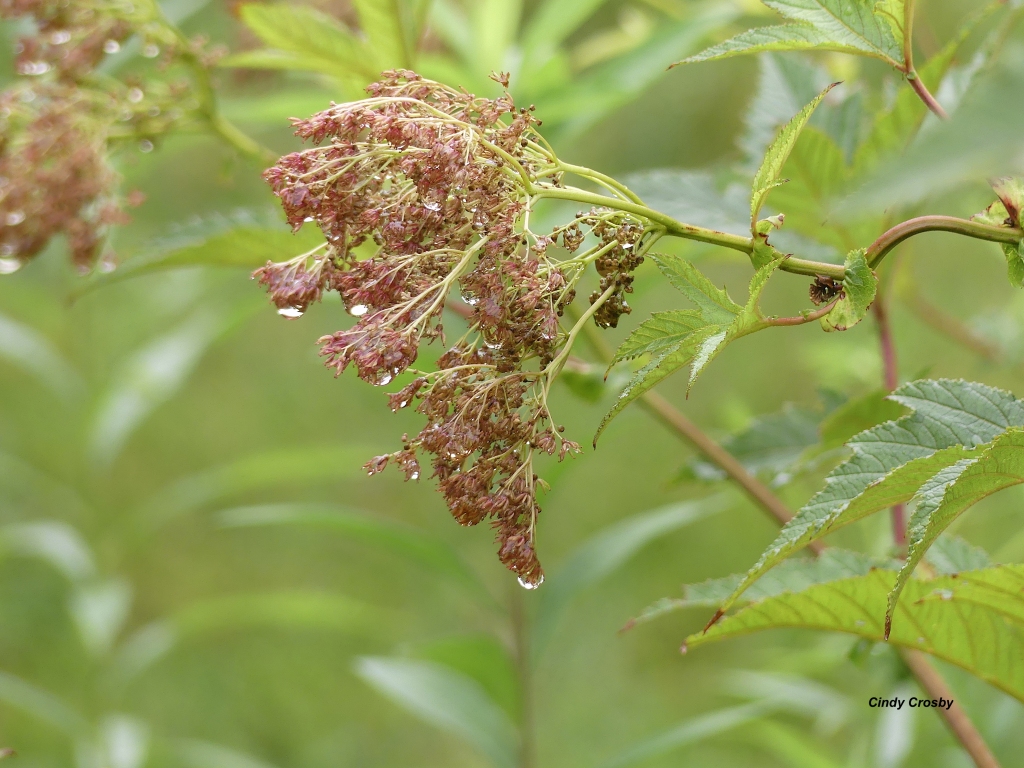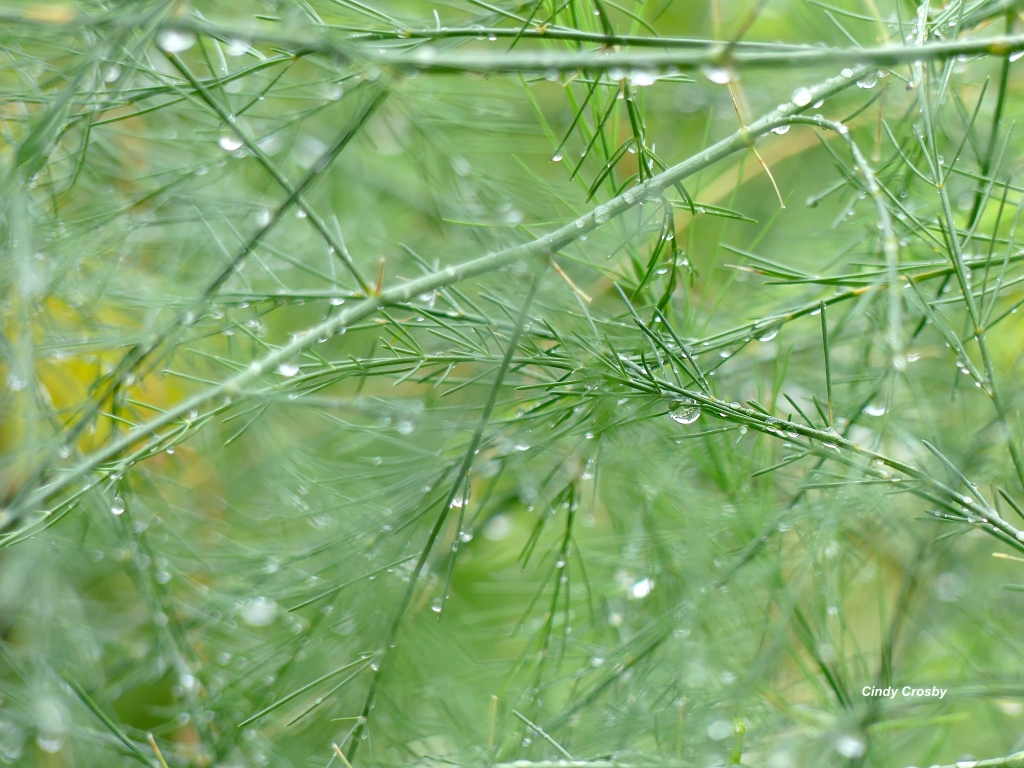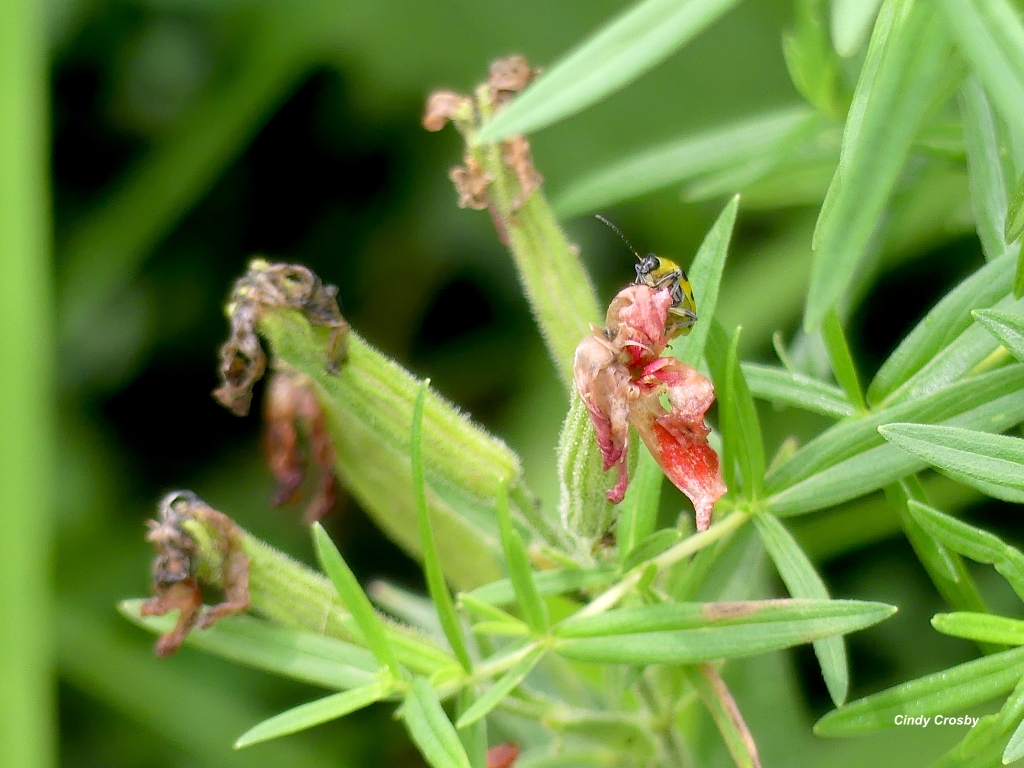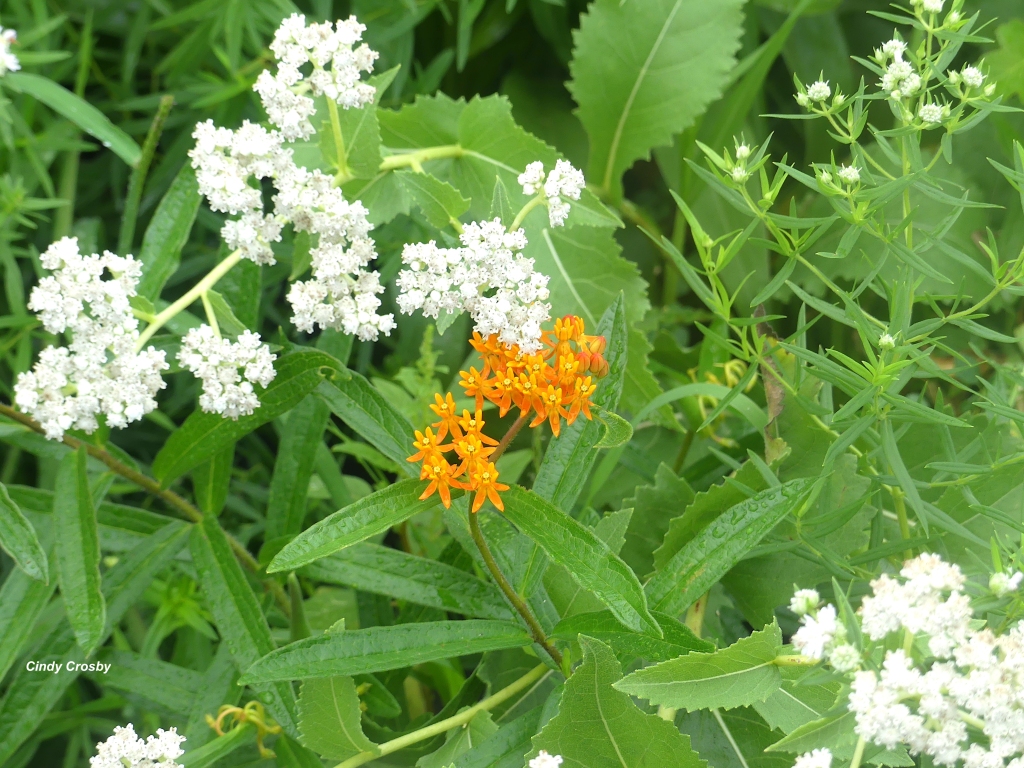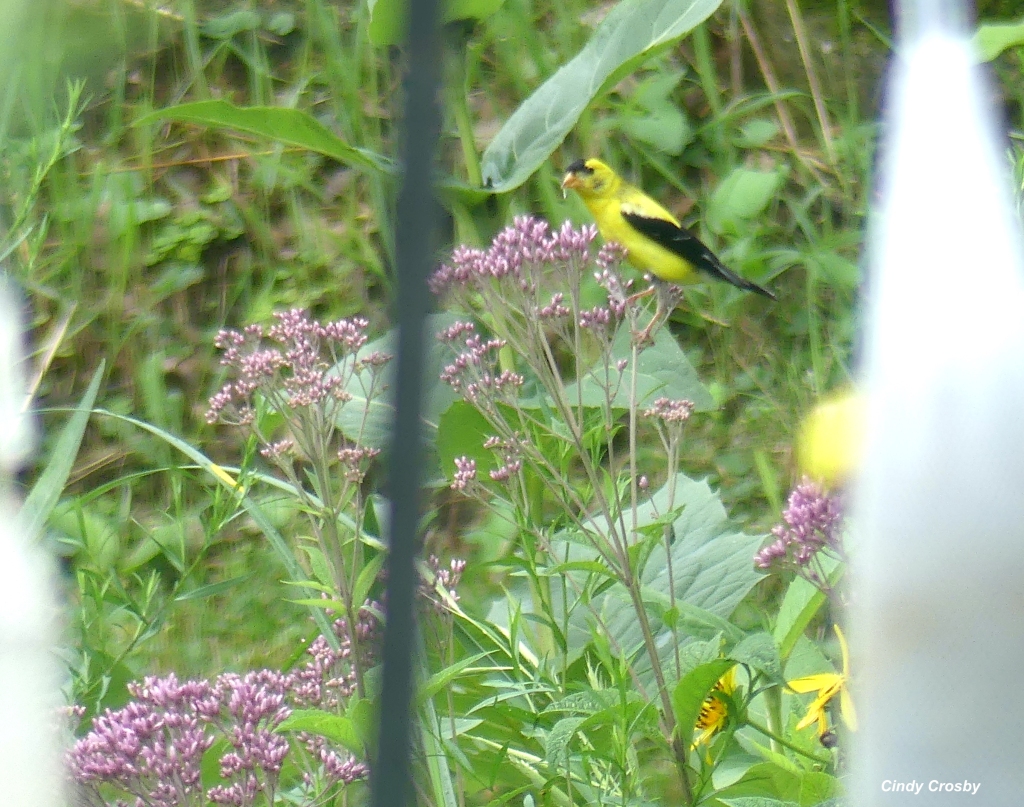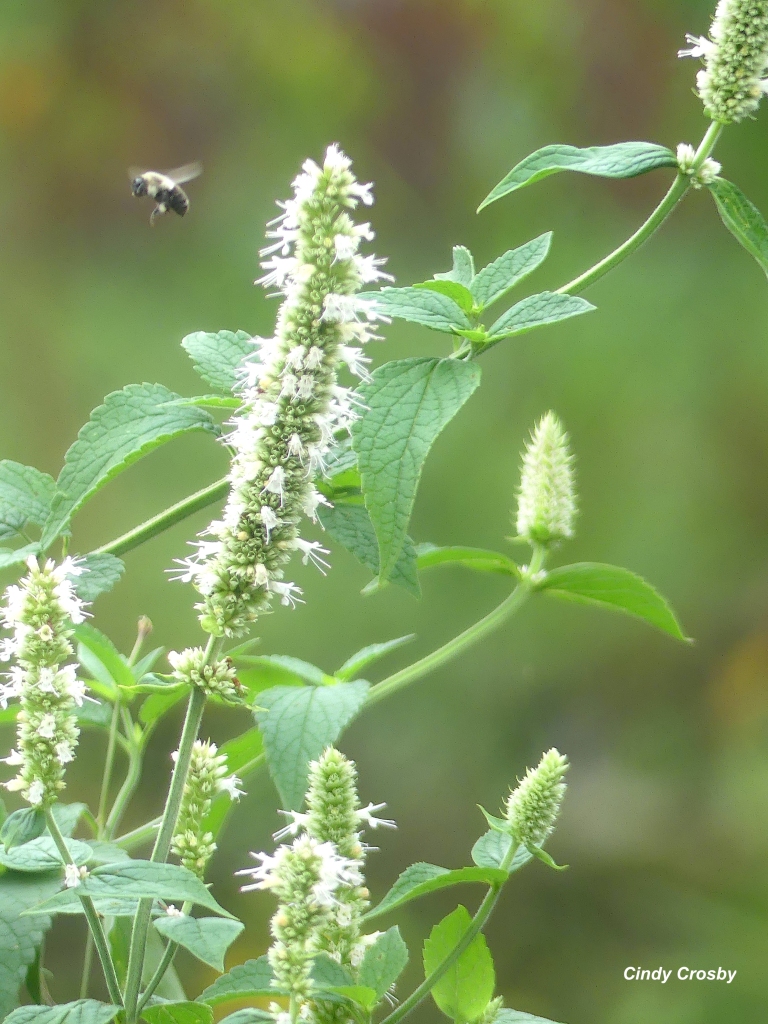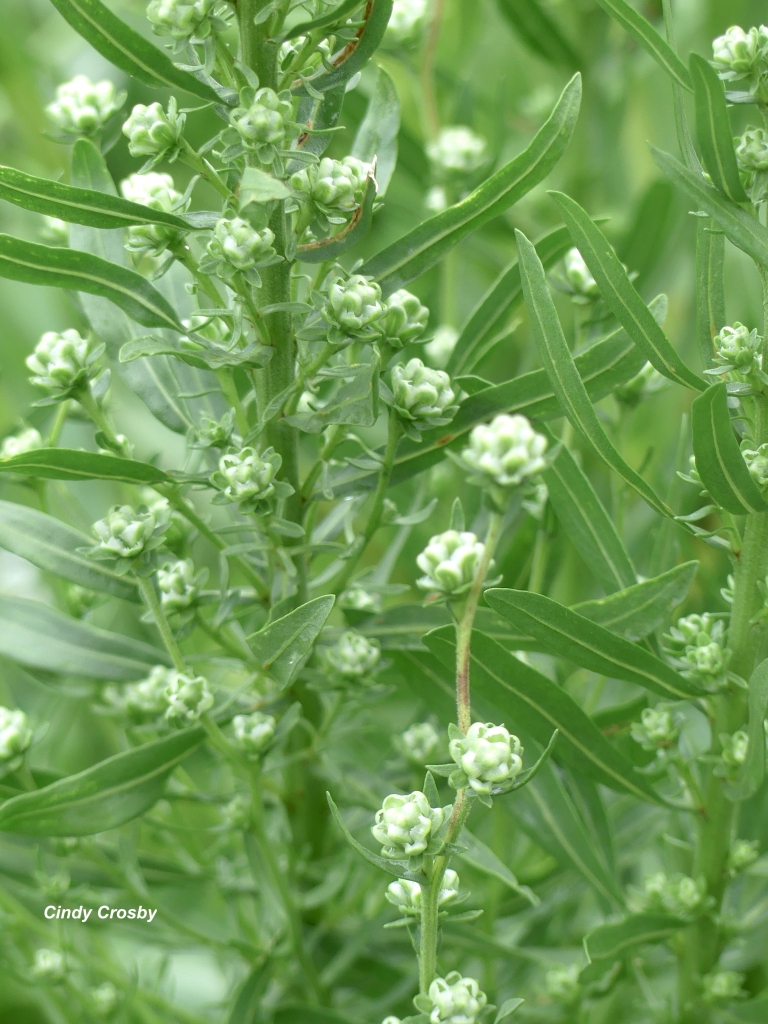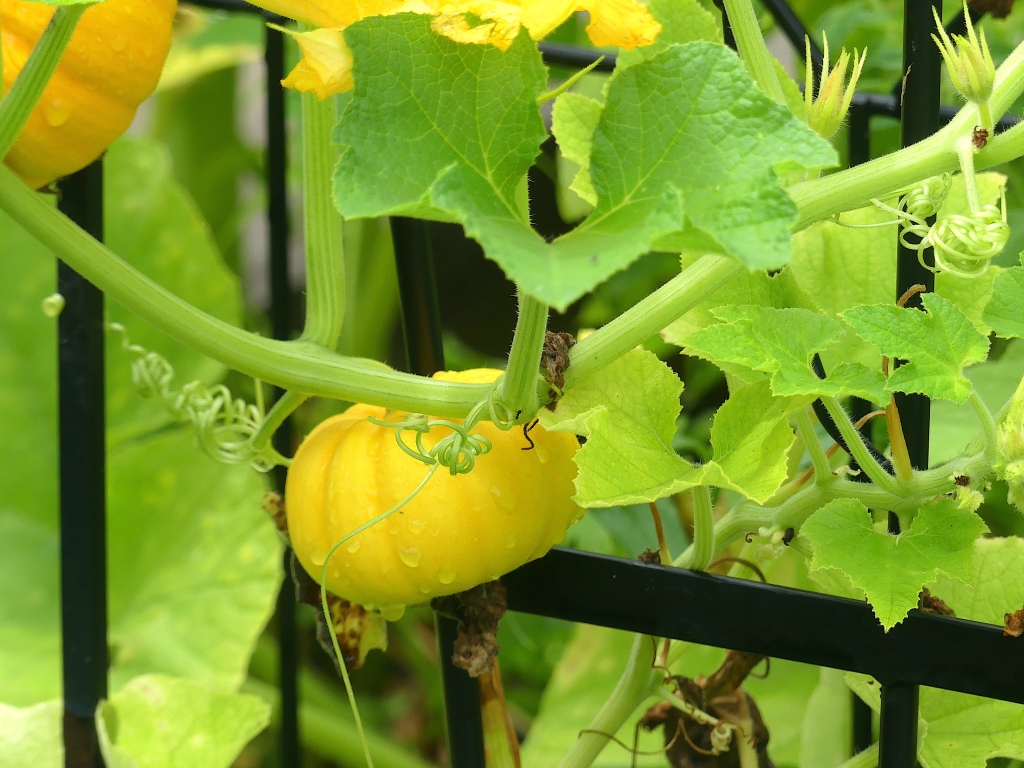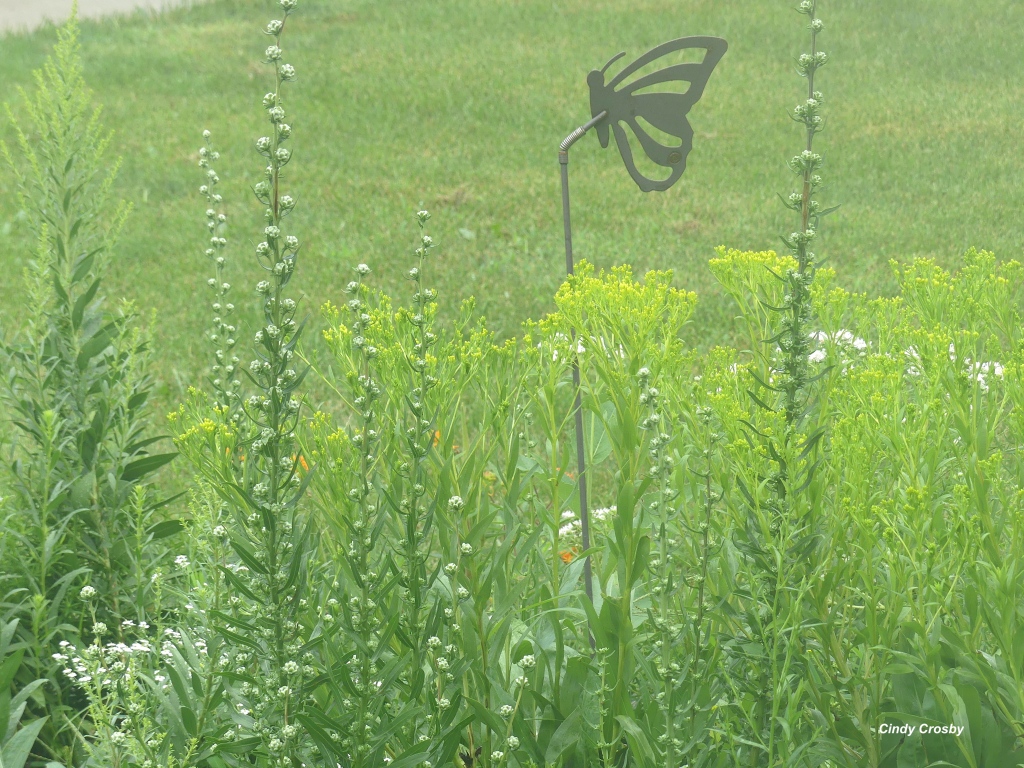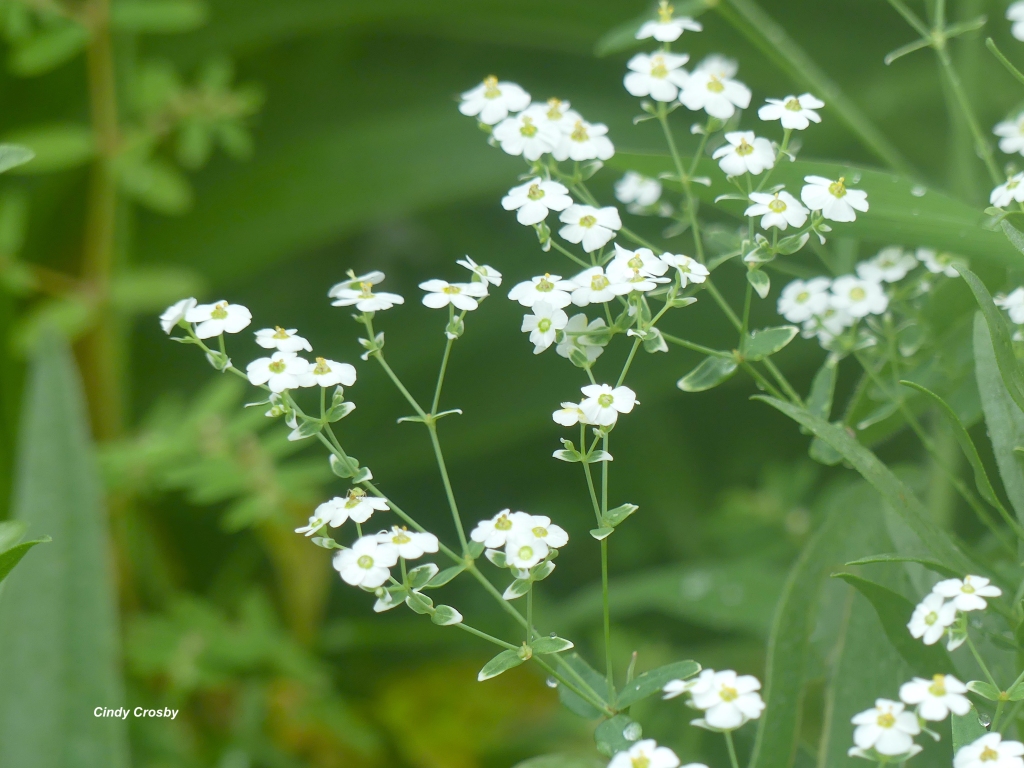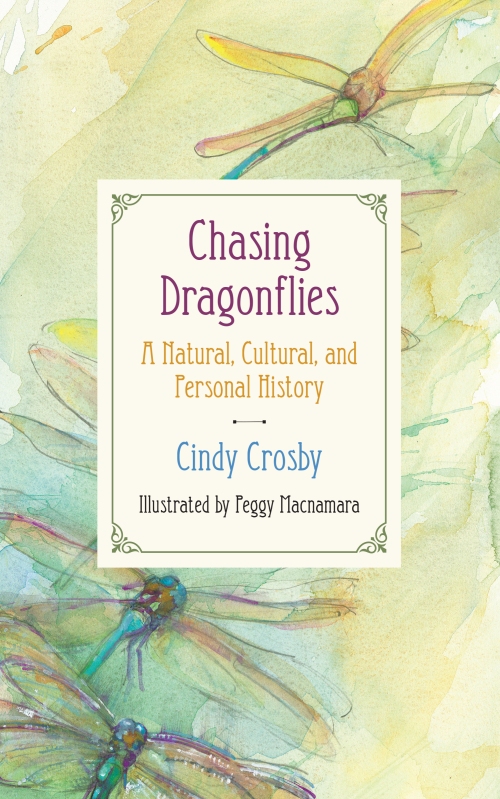“Those who have not seen a tallgrass prairie should not imagine it as like a cultivated meadow, but rather as a heaving sea of tall herbs and plants, decking it with every variety of color.” —Frederick Gerhard
*****
It’s October.

Where did the summer go? In the backyard, I pull up a few tomato plants that have finished fruiting; then compost wilted zucchini leaves. Although the peppers and raspberries are going strong, most of the garden is winding down. But so much is happening on the tallgrass prairie!
There’s a last flush of bloom, with some unexpected flowers where the firebreaks were mowed in preparation for the prairie burns to come.

All the usual October wildflowers are on display, no less lovely for their expectedness. New England asters.

And those goldenrods! Mixed with the grasses, they blur bronze, to sienna, to ochre.

Walking through the prairie this month is like hiking through clouds. Drifts of heath asters are all abuzz.

Clouds of pale Indian plantain…

…have gone to seed.

Common milkweed explodes its pods.

The monarchs, which used the milkweed all summer long as a host plant, have their mind on any nectar they can find that will fuel them for their migration trip to Mexico.
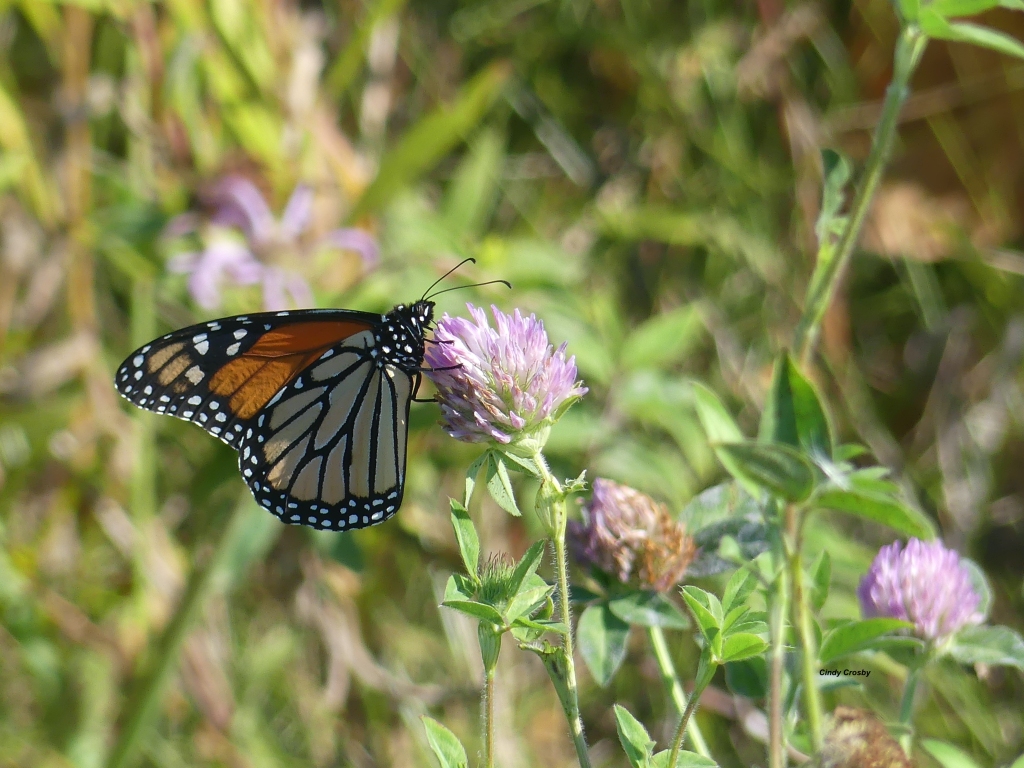
Like the monarchs, the tiger swallowtails find the non-native red clover a good place for a snack.

The non-native red clover (Trifolium pratense) occurs in every county of Illinois, according to Illinois Wildflowers. Despite its non-native status, it has a high value of usefulness to native wildlife, like these two butterfly species. In my work as a prairie steward, we leave red clover alone; it’s not overly aggressive in an older prairie planting and hangs out mostly on the edges. I leave it in my yard, as well, as it provides nectar for native insects, as does the native goldenrod…

However, the Canada goldenrod (which snuck into my prairie planting a few years ago) is aggressive. So, I manage it and some of the more rambunctious asters by pulling them throughout the year. Instead of the Canada goldenrod, I plant stiff goldenrod (Solidago rigida)…

…and the Ohio goldenrod (Solidago ohioensis), and my favorite, the showy goldenrod (Solidago speciosa) as they are much better behaved. Bees, monarchs, and pollinators love these goldenrods and they don’t outcompete my other natives.

The October prairie offers plenty of nourishment like these native goldenrods for late season fliers. Look closely.
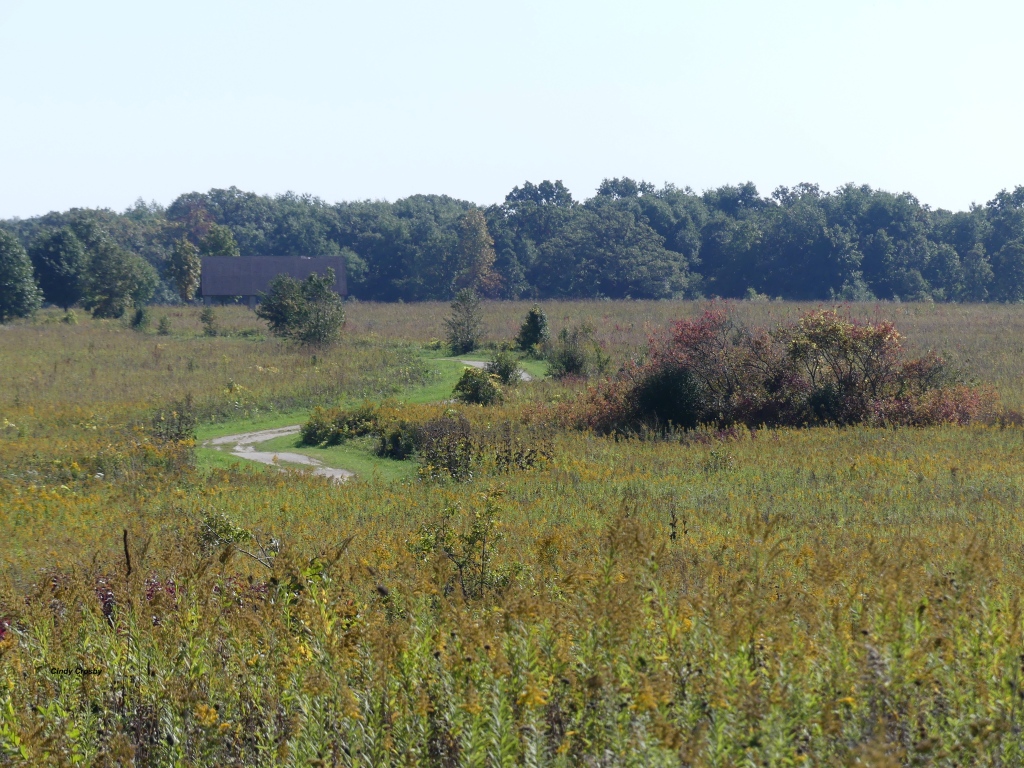
When you part the prairie grasses and really pay attention, there’s no telling what you might discover. A few damselflies are still out and about this month…

…although their numbers are slowly dwindling.
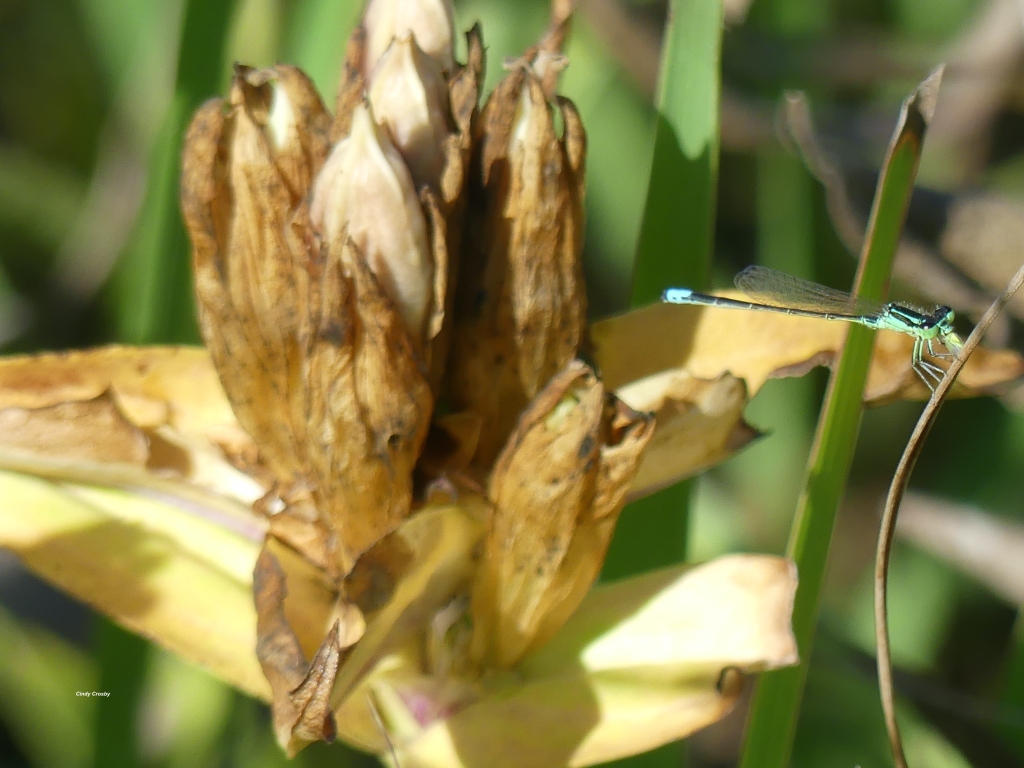
Spiders cast their silky spells.

Grasshoppers fly up at your every step along the trail.

October is young, but already full of delights that change from moment to moment.
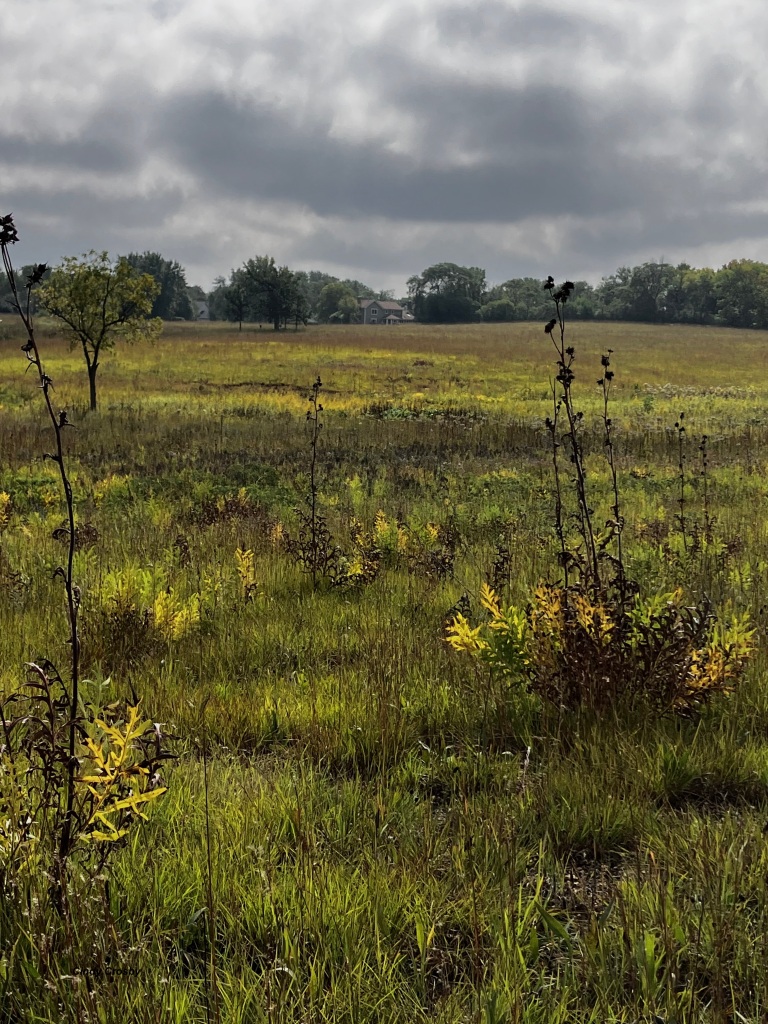
Right now, the month stretches before us. But these days will go fast. The trees are beginning to flush with their autumn colors. There’s a hint of chill in the night air. Winter will be here before we know it.

Why not go see?
******
The opening quote by Frederick Gerhard (mid-1800s) is one from an interpretive sign at Dick Young Forest Preserve in Batavia, IL. Gerhard was the author of Illinois As It Is (1857).
*****
Join Cindy for a program or class in 2023!
10/10 –1-2:30 p.m.: “The Tallgrass Prairie: Grocery Store, Apothecary, and Love Charm Shop. Hosted by Gardens, Etc. in Wheaton, IL (Closed event for members).
10/19– 10:30pm-noon: “Literary Gardens.” Hosted by the Garden Club of Iverness, Palatine, IL. Free and open to the public! For more information, click here.
11/1 — 11am-12:30 pm: “Winter Prairie Wonders” hosted by Town and Country Gardeners in Libertyville, IL. (Closed event for members). To learn more about the club, click here.
11/6 — 11am-12:30pm: “Dragonflies and Damselflies” hosted by Elmhurst Garden Club (Closed event for members). To learn how to join the garden club, click here.
11/10 –1-2:30pm: “A Brief History of Trees in America” hosted by Lombard Garden Club. Free and open to the public! For more information, click here.
11/15 –7-8:30 p.m.: “A Brief History of Trees in America” hosted by the Downers Grove Organic Garden Club. Free and open to the public! For more information, click here.
12/12 –6:45-8 p.m.: “Winter Prairie Wonders” hosted by the Buffalo Grove Garden Club. Free and open to the public! For more information, click here.
New program Dec. 1, 10-11:30 a.m. — “Bison Tales and Tallgrass Trails” at The Morton Arboretum’s Sterling Library in Lisle, IL. Registration is limited — click here for more information. Only seven spots left!
More programs may be found at http://www.cindycrosby.com.
*****
Hi awesome readers! Jeff and I are celebrating our 40th anniversary by visiting 40 natural areas over the summer and fall this year. Please let us know where you think we should head to next. Only six more to go! Thanks to everyone who has sent ideas. So far, we’ve enjoyed visiting the following places: Kayaking at #1 Rock Cut State Park (Rockford, IL); hiking at #2 James “Pate” Philip State Park (Bartlett, IL); #3 Potato Creek State Park (North Liberty, IN); #4 Indiana Dunes State Park (Porter County, IN); #5 Indiana Dunes National Park (Beverly Shores, IN); kayaking Silver Lake at #6 Blackwell Forest Preserve (Wheaton/Warrenville, IL); hiking #7 Belmont Prairie Nature Preserve (Downers Grove, IL), #8 Winfield Mounds Forest Preserve (Winfield, IL), #9 Bluff Spring Fen (Elgin, IL), #10 Herrick Lake Forest Preserve (Wheaton, IL); Jeff’s family reunion at #11 Hawthorn Park (Terre Haute, IN); hiking #12 Turkey Run State Park, Marshall, IN) and at #13 Shades State Park, Waveland, IN; hiking and bison viewing at #14 Kankakee Sands, Morocco, IN; hiking at #15 Hidden Lake Forest Preserve (Downers Grove, IL), #16 Peck Farm Park (Geneva, IL), #17 Schulenberg Prairie, The Morton Arboretum (Lisle, IL); #18 Busse Woods Forest Preserve, Elk Grove, IL; #19 Nachusa Grasslands (Franklin Grove, IL); reading in a swing along the Rock River at #20 Lowell Park (Dixon, IL); cabin overnight and hiking at #21 White Pines State Park (Mt. Morris, IL); hiking to the overlook at #22 Castle Rock State Park (Oregon, IL); enjoying the views at a prairie remnant gem #23 Beach Cemetery Prairie (Ogle County, IL); #24 Springbrook Prairie (Naperville, IL); watching eagles and hiking at #25 Starved Rock State Park (Oglesby, IL); watching the dragonfly migration at #26 Matthiessen State Park (Oglesby, IL); river overlook at #27 Buffalo Rock State Park (Ottawa, IL); #28 monarch and dragonfly migration at Wolf Road Prairie (Westchester, IL); and hiking #29 Russell R. Kirt Prairie at College of DuPage (Glen Ellyn, IL); hiking #30 Midewin National Tallgrass Prairie (Wilmington, IL), #31 Fermilab Prairies (Batavia, IL); and #32 Danada Forest Preserve (Wheaton, IL); #33 Fullersburg Woods (Oak Brook, IL); and #34 Dick Young Forest Preserve (Batavia, IL). Thanks to everyone who sent suggestions last week! More adventures to come.





































